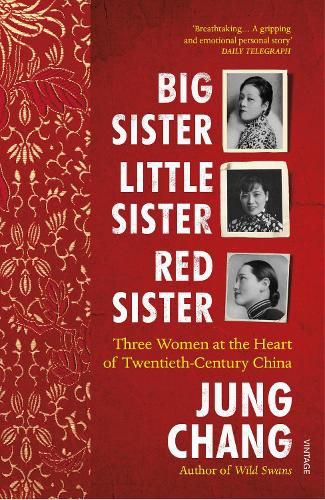Big Sister, Little Sister, Red Sister by Jung Chang
British–Chinese writer Jung Chang (Wild Swans, Empress Dowager Cixi: The Concubine Who Launched Modern China) is well-known for writing intimate biographies set against some of the world’s most turbulent events. She continues this trajectory with Big Sister, Little Sister, Red Sister, a group biography of the famous Soong sisters, that also operates as a political history of China from the fall of the Qing dynasty to the beginning of the twenty-first century. The Soong sisters are glibly described in the popular saying, ‘In China, there were three sisters. One loved money, one loved power, one loved her country’, but in Chang’s hands it becomes clear that they were far more complex than that pat summary.
Ei-ling, the oldest, was a financial and political power broker, a close adviser to General Chang-Kai-Shek and wife of business mogul H.H. Kung. Middle sister Ching-ling married the founding father of the Chinese republic, Sun Yat-sen, and later became Mao’s vice-chair. May-ling – the youngest – was Madame Chiang Kai-shek, first lady of pre-Communist Nationalist China. The sisters were educated in the West, they were glamorous, cultured, and Christian; all three were nestled into the highest strata of power as various leaders, parties and forces competed for control of post-imperial China. As could be predicted, the chapters covering the Second Sino–Japanese War and World War II are some of the most vivid, but throughout the Soong women face great loss and suffering, danger (at times, literally being shot at) and exile. Despite the fact that they often occupied opposing sides in cut-throat ideological battles, they still maintained the strongest of blood ties.
It seems self-evident that Chang has made a life project of elevating the lives of Chinese women in our collective memories. It’s a conundrum of Big Sister, Little Sister, Red Sister that it’s quite impossible to talk about the Soong sisters without constant reference to their husbands, but Chang never wavers in her focus on the close interior lives of the Soong women, and the influence and charisma they wielded.



